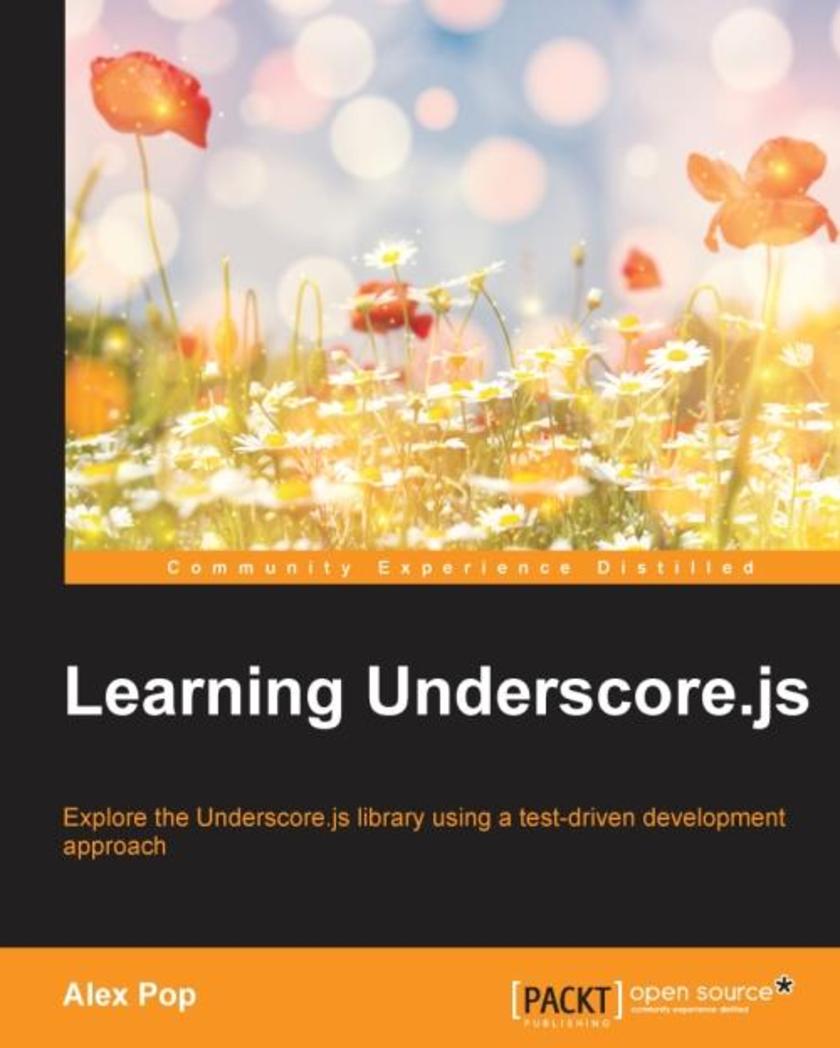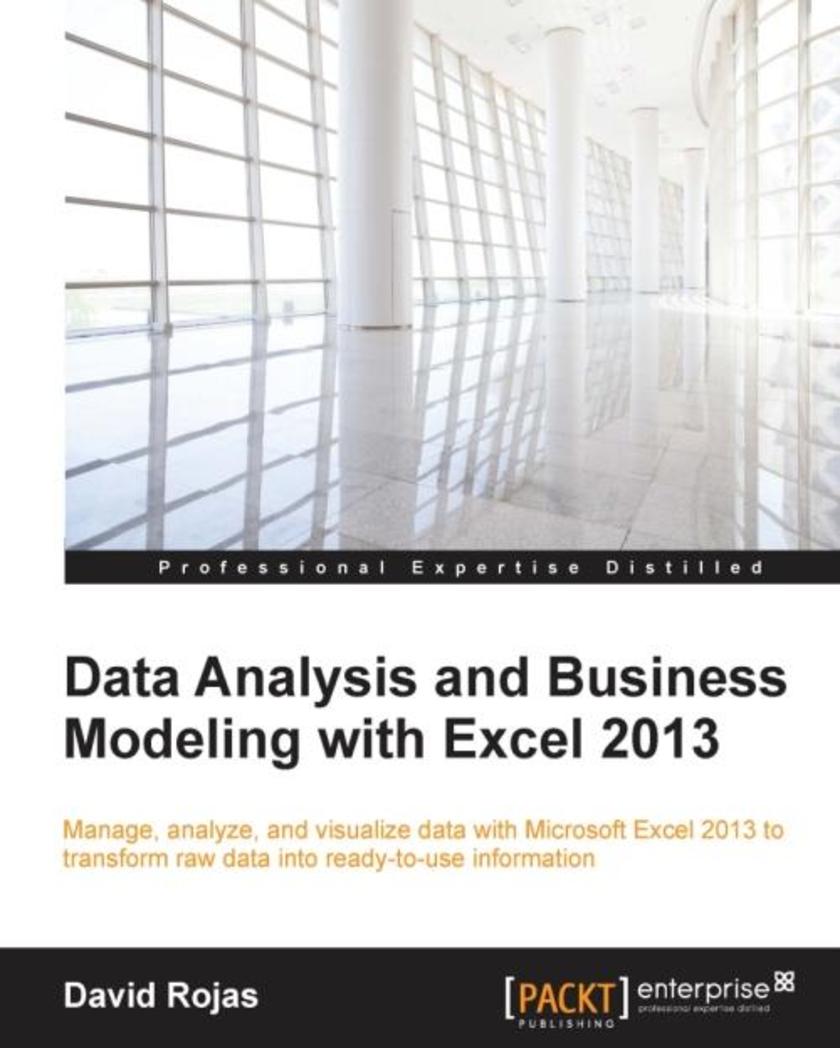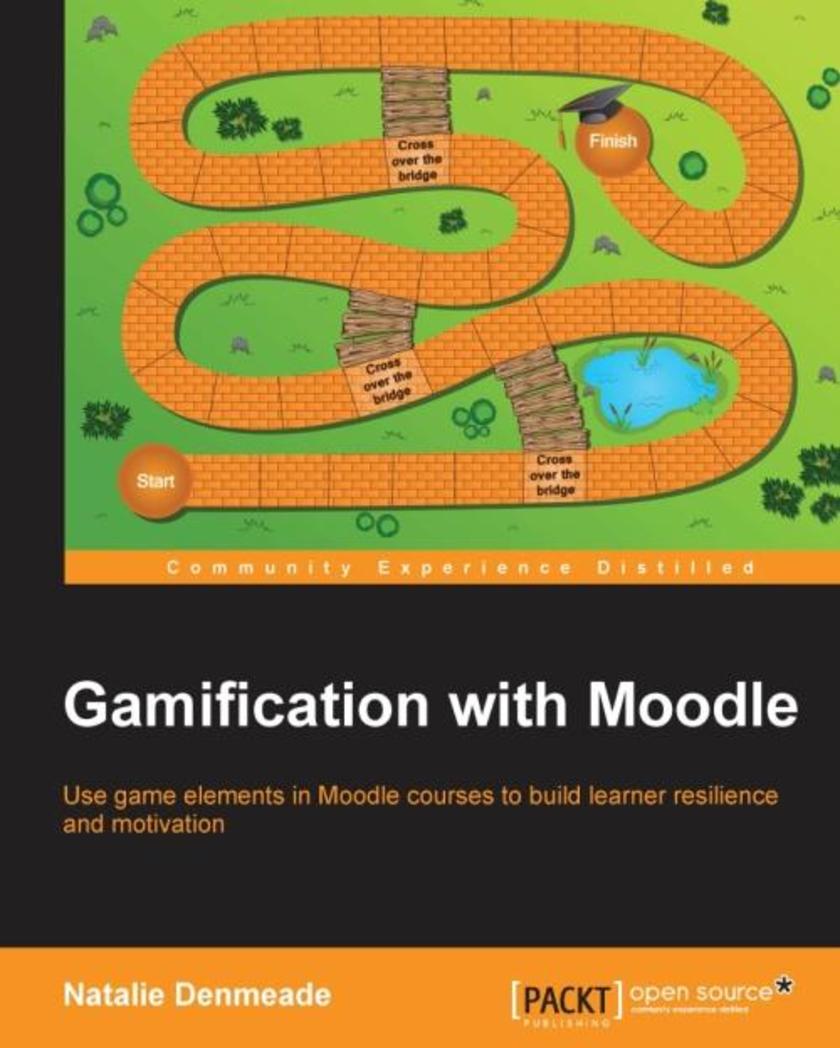
Mere Christianity
¥90.77
One of the most popular and beloved introductions to the concept of faith ever written, Mere Christianity has sold millions of copies worldwide. The book brings together C. S. Lewis legendary radio broadcasts during the war years, in which he set out simply to explain and defend the belief that has been common to nearly all Christians at all times. Rejecting the boundaries that divide Christianity many denominations, Mere Christianity provides an unequalled opportunity for believers and nonbelievers alike to absorb a powerful, rational case for the Christian faith.

Production Ready OpenStack - Recipes for Successful Environments
¥80.65
Over 90 practical and highly applicable recipes to successfully deploy various OpenStack configurations in productionAbout This BookGet a deep understanding of OpenStack’s internal structure and servicesLearn real-world examples on how to build and configure various production grade use cases for each of OpenStack's servicesUse a step-by-step approach to install and configure OpenStack’s services to provide Compute, Storage, and Networking as a services for cloud workloads Who This Book Is For If you have a basic understanding of Linux and Cloud computing and want to learn about configurations that OpenStack supports, this is the book for you. Knowledge of virtualization and managing Linux environments is expected. Prior knowledge or experience of OpenStack is not required, although beneficial.What You Will LearnPlan an installation of OpenStack with a basic configurationDeploy OpenStack in a highly available configurationConfigure Keystone Identity services with multiple types of identity backendsConfigure Glance Image Store with File, NFS, Swift, or Ceph image backends and use local image cachingDesign Cinder to use a single storage provider such as LVM, Ceph, and NFS backends, or to use multiple storage backends simultaneouslyManage and configure the OpenStack networking backendConfigure OpenStack's compute hypervisor and the instance scheduling mechanismBuild and customize the OpenStack dashboard In Detail OpenStack is the most popular open source cloud platform used by organizations building internal private clouds and by public cloud providers. OpenStack is designed in a fully distributed architecture to provide Infrastructure as a Service, allowing us to maintain a massively scalable cloud infrastructure. OpenStack is developed by a vibrant community of open source developers who come from the largest software companies in the world. The book provides a comprehensive and practical guide to the multiple uses cases and configurations that OpenStack supports. This book simplifies the learning process by guiding you through how to install OpenStack in a single controller configuration. The book goes deeper into deploying OpenStack in a highly available configuration. You’ll then configure Keystone Identity Services using LDAP, Active Directory, or the MySQL identity provider and configure a caching layer and SSL. After that, you will configure storage back-end providers for Glance and Cinder, which will include Ceph, NFS, Swift, and local storage. Then you will configure the Neutron networking service with provider network VLANs, and tenant network VXLAN and GRE. Also, you will configure Nova’s Hypervisor with KVM, and QEMU emulation, and you will configure Nova’s scheduler filters and weights. Finally, you will configure Horizon to use Apache HTTPD and SSL, and you will customize the dashboard’s appearance.Style and approach This book consists of clear, concise instructions coupled with practical and applicable recipes that will enable you to use and implement the latest features of OpenStack.

Meteor Design Patterns
¥63.21
Accelerate your code writing skills with over twenty programming patterns that will make your code easier to maintain and scaleAbout This BookOptimize your web application for production useBuild views and controllers with minimal effort that will evolve with your applicationLearn how to maintain a MeteorJS project while it is running in production Who This Book Is For This book is for developers who have already had an introductory course with Meteor. Basic knowledge of web development is recommended.What You Will LearnUse of Jade, Stylus, and CoffeeScript to speed up web developmentIncrease productivity by leveraging the best packages in the communityOptimize your site for load speed with advanced publishers and subscribersLeverage the aggregation framework to produce results with big dataMaster the intricacies of front-end development using Jeet, Bootstrap, CSS animations, and moreOptimize your site for search engine visibilitySecure your site with Meteor’s best practicesTrack the live status of your application, ensuring all errors have been taken care of In Detail With the increasing interest in NodeJS web applications, a new framework, Meteor, has joined the ranks to simplify developer workflows. Meteor is one of the few open source frameworks that has received funding since its early development stages. It builds on ideas from existing frameworks and libraries, offering developers an easy way to develop a prototype app. At the same time, it gives them the tools and flexibility to build a fully fledged production app. Meteor is the weapon of choice for start-ups in today’s world. Meteor Design Patterns cuts through the jargon that most websites play with and gets to the point with simple solutions that will boost your development skills. We start off with a refresher on the basics of JavaScript programming such as templates, CoffeeScript, the Event Loop, and the Merge Box, amongst others. You then learn how to map real-world data and optimize the data’s publishers to output data with the least amount of work done by the server with some subscribe and publish patterns. Next, using front-end patterns, you will learn how to create maintainable and trackable forms, and make our site crawlable by any search engine. Following this, you will see how to optimize and secure the web application and maintain applications without breaking other features. Finally, you will learn how to deploy a secure production-ready application while learning to set up modulus, compose with Oplog tracking and SSL certificates, as well as error tracking with Kadira. Throughout the book, you will put your skills to practice and build an online shop from scratch. By the end of the book, you will have built a feature-rich online shop.Style and approach The book is a practical handbook on how to build an e-commerce web app using Meteor. Every topic ties into the webapp to easily illustrate the concepts that you are learning about.

Learning Underscore.js
¥71.93
Explore the Underscore.js library by example using a test-driven development approachAbout This BookUnderstand and learn to apply functional programming principles using the built-in functions of Underscore.jsLeverage and reuse Underscore.js-based code to create code that targets client, server, or database contextsTake Underscore.js further by reusing code between client and server and by learning about other closely related libraries Who This Book Is For If you are a developer with fundamental JavaScript knowledge and want to use modern JavaScript libraries to extend your functional programming skills, then Underscore.js is an important library you should be familiar with.What You Will LearnReference and call Underscore.js functions using a modern JavaScript development workflowApply Underscore.js to JavaScript arrays, objects, and functionsTake advantage of object-oriented or functional programming techniques with Underscore.jsLeverage Underscore.js to create code that targets client, server, or database contextsExtend Underscore.js functionality with other closely related librariesReuse Underscore.js-based code between client and server applicationsPrepare for the upcoming JavaScript standard ECMAScript 6 and support older browsers In Detail Underscore.js is one of the most popular modern JavaScript libraries used for functional programming. It can be used as a base for building complex JavaScript applications in a sustainable manner and for building other JavaScript libraries. It embraces functional programming principles but is not opinionated and can be used with imperative, object-oriented, functional, or other programming styles. This book explores how to use Underscore.js to power your code and understand modern JavaScript development concepts while applying a lightweight and efficient workflow to build applications. The book starts with an incremental Underscore.js introduction by exploring key JavaScript concepts. You will then explore the basic features of Underscore.js in action and establish a lightweight development workflow that allows the provided examples to be guided by tests. The book then covers the functionality of Underscore.js with in-depth examples and explanations for understanding and applying the Underscore.js API. You'll also learn how to use Underscore.js as a base for your own modules and libraries within an object-oriented or functional programming style, and will be able to explore Underscore.js use cases in different environments. Eventually, you'll learn about libraries that are closely related with Underscore.js, how to share code between client and server, and how to prepare for the upcoming JavaScript standard ECMAScript 6.Style and approach This book takes an example-driven approach to describing some of the essential JavaScript concepts and practices that are useful for building sustainable applications.

Data Analysis and Business Modeling with Excel 2013
¥71.93
Manage, analyze, and visualize data with Microsoft Excel 2013 to transform raw data into ready to use informationAbout This BookCreate formulas to help you analyze and explain findingsDevelop interactive spreadsheets that will impress your audience and give them the ability to slice and dice dataA step-by-step guide to learn various ways to model data for businesses with the help of Excel 2013 Who This Book Is For If you want to start using Excel 2013 for data analysis and business modeling and enhance your skills in the data analysis life cycle then this book is for you, whether you’re new to Excel or experienced.What You Will LearnDiscover what Excel formulas are all about and how to use them in your spreadsheet developmentIdentify bad data and learn cleaning strategiesCreate interactive spreadsheets that engage and appeal to your audienceLeverage Excel’s powerful built-in tools to get the median, maximum, and minimum values of your dataBuild impressive tables and combine datasets using Excel’s built-in functionalityLearn the powerful *ing language VBA, allowing you to implement your own custom solutions with ease In Detail Excel 2013 is one of the easiest to use data analysis tools you will ever come across. Its simplicity and powerful features has made it the go to tool for all your data needs. Complex operations with Excel, such as creating charts and graphs, visualization, and analyzing data make it a great tool for managers, data scientists, financial data analysts, and those who work closely with data. Learning data analysis and will help you bring your data skills to the next level. This book starts by walking you through creating your own data and bringing data into Excel from various sources. You’ll learn the basics of SQL syntax and how to connect it to a Microsoft SQL Server Database using Excel’s data connection tools. You will discover how to spot bad data and strategies to clean that data to make it useful to you. Next, you'll learn to create custom columns, identify key metrics, and make decisions based on business rules. You’ll create macros using VBA and use Excel 2013’s shiny new macros. Finally, at the end of the book, you'll be provided with useful shortcuts and tips, enabling you to do efficient data analysis and business modeling with Excel 2013.Style and approach This is a step-by-step guide to performing data analysis and business modelling with Excel 2013, complete with examples and tips.

Ionic Cookbook
¥90.46
Over 35 exciting recipes to spice up your application development with IonicAbout This BookLearn how to utilize the robust features of Ionic CLI and its framework to create, develop, and build your mobile appExplore new integrations with various Backend-as-a-Services, along with AngularJS modules, for creative solutionsUse out-of-the-box Ionic functionalities, customize existing components, and add new components with this comprehensive, step-by-step guide Who This Book Is For If you are a front-end developer and want to take advantage of your existing mobile application development skills to develop cross-platform mobile apps, this book is for you. You will build up your Ionic knowledge with in-depth recipes on Angular.js, Cordova, and Sass.What You Will LearnAuthenticate users using an e-mail password, Twitter, Facebook, Google+, and LinkedInRetrieve data and store it using FirebaseAccess native device functionalities such as a camera, contact list, e-mail, and maps using ngCordovaWork with localStorage and SQLite for persistent data access on the client sideCommunicate to and from your app using push notifications or SMSLeverage AngularJS events and Ionic-specific events to communicate across pages, controllers, and directivesCustomize the color and theme of your Ionic appCreate new custom directives as componentsCompile your app for iOS, Android, and Windows Phone In Detail The world of mobile development is extremely fragmented with many platforms, frameworks, and technologies available. Ionic is intended to fill that gap, by enabling developers to build apps that have a native feel to them, using web technologies such as HTML, CSS, and AngularJS. Ionic makes it easy for front-end developers to become app developers. The framework provides superior performance with deep Cordova integration and a comprehensive set of tools for prototyping, backend support, and deployment. Ionic Cookbook takes you through the process of developing a cross-platform mobile app using just HTML5 and the JavaScript-based Ionic. You will start with an introduction to the CLI and then move on to building and running an app. You will explore common features of real-world mobile apps such as authenticating a user, and getting and saving data using either Firebase or Local Storage. Next, the book covers how Ionic integrates with Cordova to support native device features using ngCordova, and you will discover how to take advantage of existing modules around its ecosystem. You will also delve into advanced topics, including how to extend Ionic to create new components. Finally, the book will walk you through customizing the Ionic theme and building the app so that it can be deployed to all platforms.Style and approach This book follows a recipe-based approach to cross-platform mobile app development, where each task is explained in a conversational and easy-to-follow style. Every topic explains individual features or components of Ionic, and provides extra details for readers to come up with custom solutions based on real-world applications.

Gamification with Moodle
¥54.49
Use game elements in Moodle courses to build learner resilience and motivationAbout This BookFormulate a Moodle course that acts as a flexible framework ready for your own contentKeep learners engrossed and create opportunities for motivation through the concepts of status, access, and powerA resourceful guide to innovative learning using automatic reports, assessments, and conditional release of activities Who This Book Is For This book has been designed for teachers who to use technology to create more engaging learning experiences for both online learning and in face-to-face sessions. This book will especially appeal to people who are interested in the underlying mechanics of play and games and want to know more about applying these concepts in an educational context. It is assumed that you are a teacher and expert in your field, have basic computer skills, and have access to the Internet.What You Will LearnSet up a scoring system using Moodle GradebookEnable communication and collaboration in your class as a Learning Community using forumsAssess your learners’ abilities by setting up challenges and questsConfigure gateways to check and ensure progress before new content or activities are releasedCreate Moodle assignments to provide effective feedback through a comment bank and custom scaleIssue Open Badges to recognize achievements and set up an online backpack to share digital badgesReduce anxiety for learners by using the game-like concept of “Levelling Up” In Detail This book describes how teachers can use Gamification design within the Moodle Learning Management System. Game elements can be included in course design by using, badges, rubrics, custom grading scales, forums, and conditional activities. Moodle courses do not have to be solo-learning experiences that replicate Distance Education models. The Gamification design process starts by profiling players and creating levels of achievement towards meeting learning outcomes. Each task is defined, valued, and sequenced. Motivation loops are devised to keep the momentum going. In a gaming studio, this approach would require a team of specialists with a large budget and time frames. Preparing for a class rarely has these optimal conditions. The approach used in this book is to introduce game elements into the course design gradually. First, apply gamification to just one lesson and then build up to gamifying a series of lessons over a term. Each example will indicate the difficulty level and time investment. Try it out to see what is most effective with your learners and choose wisely in your use of technology. By the end of this book, you will be able to create Moodle courses that incorporate choice, communication, challenge, and creativity.Style and approach An easy-to-follow guide full of screenshots and step-by-step instructions with estimated time frames required to accomplish numerous tasks. Tips are offered for new Moodlers and plugin extensions are suggested for advanced Moodlers. The focus of the book is on why you would want to use each activity rather than detailed technical de*ions.

Total Freedom
¥110.71
Counted among his admirers are Jonas Salk, Aldous Huxley, David Hockney, and Van Morrison, along with countless other philosophers, artist, writers and students of the spiritual path. Now the trustees of Krishnamurti work have gathered his very best and most illuminating writings and talks to present in one volume the truly essential ideas of this great spiritual thinker.Total Freedom includes selections from Krishnamurti early works, his Commentaries on Living, and his discourses on life, the self, meditation, sex and love. These writings reveal Krishnamuri core teachings in their full eloquence and power: the nature of personal freedom; the mysteries of life and death; and the pathless land, the personal search for truth and peace. Warning readers away from blind obedience to creeds or teachers including himself Krishnamurti celebrated the individual quest for truth, and thus became on of the most influential guides for independent-minded seekers of the twentieth century and beyond.

The Hero's Guide to Saving Your Kingdom
¥44.73
Prince Liam. Prince Frederic. Prince Duncan. Prince Gustav. You’ve never heard of them, have youThese are the princes who saved Sleeping Beauty, Cinderella, Snow White, and Rapunzel, respectively, and yet, thanks to those lousy bards who wrote the tales, you likely know them only as Prince Charming. But all of this is about to change. Rejected by their princesses and cast out of their castles, the princes stumble upon an evil plot that could endanger each of their kingdoms. Now it up to them to triumph over their various shortcomings, take on trolls, bandits, dragons, witches, and other assorted terrors, and become the heroes no one ever thought they could be. Christopher Healy Hero Guide to Saving Your Kingdom is a completely original take on the world of fairy tales, the truth about what happens after “happily ever after.” It a must-have for middle grade readers who enjoy their fantasy adventures mixed with the humor of the Diary of a Wimpy Kid books. Witty black-and-white drawings by Todd Harris add to the fun.

The Spirit of the Disciplines
¥88.56
How to Live as Jesus Lived Dallas Willard, one of today's most brilliant Christian thinkers and author of The Divine Conspiracy (Christianity Today's 1999 Book of the Year), presents a way of living that enables ordinary men and women to enjoy the fruit of the Christian life. He reveals how the key to self-transformation resides in the practice of the spiritual disciplines, and how their practice affirms human life to the fullest. The Spirit of the Disciplines is for everyone who strives to be a disciple of Jesus in thought and action as well as intention.

Stress Relief for Disasters Great and Small
¥72.70
This valuable pre*ive guide, organized by timeline, addresses such questions as: How can we tell when the normal becomes abnormalWhen should we worryHow do we know what's coming nextDr. Witkin provides both strategies and support for the unique, acute anxiety and chronic emotional and physical fall-out that results from trauma, whether caused by the events of 9/11 or the loss of a loved one. She emphasizes that the process is the same for any type of disaster, and spells out what she calls the sequence of recovery after disaster knowing what to do and what feelings to expect and when. Most important, Stress Relief includes more than 80 specific pre*ions to help you help yourself and others, from day one to year one and beyond.

The Mocha Manual to Turning Your Passion into Profit
¥95.39
Who among us haven't dreamed of turning our passion into an income-producingenterpriseWhether it's arranging flowers, creating our own beauty products, or taking care of children, we all have our special talents. But how do you turn your hobbies into something more lucrativeAnd when would you ever find the time?In an uncertain economy, there is no better time than now to get started and The Mocha Manual to Turning Your Passion into Profit offers the step-by-step answers you need to turn your ideas into a business plan and your business plan into a bona fide business. Whether Kimberly Seals-Allers, an entrepreneur herself, is directing you toward resources that will tell you which licenses you need to get started or advising you on how to pick an accountant once your business starts to grow, you can count on her counsel to be clear, concise, and inspiring. Her wisdom on everything from marketing ideas to managing employees is combined with advice and anecdotes from everyday women who have founded companies ranging from small IT consulting businesses to massive operations such as Carol's Daughter. Whether you want to quit your job and start your own company or supplement your existing income with a "side hustle," this inspiring book is for you.

On Their Own
¥93.88
An indispensable guide to the special challenges faced by parents of learning-disabled children as they enter adulthood, by the author of Laughing Allegra, a leading activist and parent of an adult child with LD.In 2003 Anne Ford (great-granddaughter of Henry Ford) published Laughing Allegra, about the struggles of raising her learning-disabled daughter, and received a flood of letters from parents of children with LD, ADD, and ADHD, many expressing concerns about what to do as their children age.On Their Own is an invaluable road map to ease these parents' fears and answer their questions, especially the one that haunts them daily: Will or can their child be on their own, and howIn a candid, sympathetic style, laced with real-life stories, the book covers such topics as: Social skills and dating Staying healthy Sibling relationships Interaction with employers and co-workers Job hunting Finding the right college or trade school Estate planning Also included are a comprehensive resource guide and exclusive interviews with prominent professionals who have surmounted their learning disabilities: CEO's Sir Richard Branson, John Chambers, David Neeleman, and Charles Schwab, and former governor Gaston Caperton.

That's Not What I Meant!
¥94.10
At home, on the job, in a personal relationship, it's often not what you say but how you say it that counts.Deborah Tannen revolutionized our thinking about relationships between women and men in her #1 bestseller You Just Don't Understand. In That's Not What I Meant!, the internationally renowned sociolinguist and expert on communication demonstrates how our conversational signals voice level, pitch and intonation, rhythm and timing, even the simple turns of phrase we choose are powerful factors in the success or failure of any relationship. Regional speech characteristics, ethnic and class backgrounds, age, and individual personality all contribute to diverse conversational styles that can lead to frustration and misplaced blame if ignored but provide tools to improve relationships if they are understood.At once eye-opening, astute, and vastly entertaining, Tannen's classic work on interpersonal communication will help you to hear what isn't said and to recognize how your personal conversational style meshes or clashes with others. It will give you a new understanding of communication that will enable you to make the adjustments that can save a conversation . . . or a relationship.

Why Suicide?
¥83.03
According to the American Foundation for Suicide Prevention, in our lifetimes 80 percent of us will have some up-close experience with the suicide of someone we know. And more than 20 percent of us will have a family member die by suicide. Journalist Eric Marcus knows this better than most people. In 1970, his father took his life at the age of 44. In 2008, his 49-year-old sister-in-law took her life as well.In a completely revised and updated edition of the landmark original Why Suicide ?, Eric Marcus offers thoughtful answers to scores of questions about this complex, painful issue, from how to recognize the signs of someone who is suicidal to strategies for coping in the aftermath of a loved one's death.No matter what the circumstances, those of us who are affected by suicide are left with difficult and disturbing questions: Why did they do itWas it my faultWhat should I tell people when they ask what happenedIs someone who attempts suicide likely to try againWhat should I do if I'm thinking of killing myselfDrawing from his own experience, as well as interviews with people who have been touched by suicide, Eric Marcus cuts through the veil of silence and misunderstanding to bring clarity, reassurance, and comfort to those who so desperately need it.

Finding Your Way Home
¥90.51
What does it mean to feel at home, truly present with ourselves, comfortable with our choices, and alive to the possibilities of conscious changeHow can we develop inner balance and connection, keeping our boundaries clear while opening our hearts to those we loveWith practical wisdom and insight, Melody Beattie addresses these questions, encouraging us to reach a higher level of living and loving, and showing us how to be at home with ourselves wherever we are in the world, at whatever stage of life.Through true stories and take-action exercises, including journaling, visualizations, affirmations, meditations, and prayers, Beattie provides the essential tools to help us discover our own sense of home. Accessible and illuminating, Finding Your Way Home is a soul-searching look at how not to be victimized by ourselves'or other people. Beattie urges us to discover new levels of integrity, to break through barriers that have blocked us for too long. This is a powerful and challenging book about buying back our souls and learning to live a life guided by spirit.

Just Tell Me What to Say
¥88.56
Parents are often perplexed by their children's typical behaviors and inevitable questions. This down-to-earth guide provides "Tips and Scripts" for handling everything from sibling rivalry and the food wars to questions about death, divorce, sex, and "whyyyy?" Betsy Brown Braun blends humor with her expertise as a child development specialist, popular parent educator, and mother of triplets. Whatever your dilemma or child's question from "How did the baby get in your tummy?" to "What does 'dead' mean?" to "It's not fair!" Betsy offers the tools and confidence you need to explain the world to your growing child.

The Gospel According to Dogs
¥67.09
Bestselling author of The Gospel According to Peanuts Robert Short reveals what man's best friend can teach us about life. Dogs do much more than just keep us company and give us love and attention they are models for how we can live better lives as humans. From humility and obedience to singleness of purpose and unconditional love, Short shows us how we can learn from the remarkable qualities of dogs. Using examples from more than forty classic comic strips, including Peanuts, Blondie, Family Circus, Luann, Mother Goose Grimm, Fred Basset, and more, as well as charming photographs of real dogs, The Gospel According to Dogs is a delight-fully entertaining book for dog lovers, comic enthusiasts, and anyone looking for reassuring wisdom for the good life.

Journey to the Heart
¥90.77
In the spirit of her bestselling The Language of Letting Go, one of America's most beloved inspirational writers guides us on a sacred journey as we learn to expand our creativity, embrace our powers, and open our hearts.Writing with the same warmth, honesty, and compassion that has attracted such a loyal following, Melody Beattie now charts a new path toward spiritual growth and renewal. In 365 insightful and delightfully warm daily reflections, Journey to the Heart will inspire us all to discover our true purpose in the world and learn to connect even more deeply with ourselves, the creative force, and the magic and mystery in the world around and within us.

Mars and Venus Starting Over
¥90.51
Is it possible to find love again after a breakup, death, or divorce?At the end of a relationship, it can sometimes feel like the end of the world. Devastation, loneliness, and bitterness are some emotions that exist due to a breakup, divorce, or the loss of a loved one. But with the help of this compassionate guide, Dr. John Gray expresses that you will survive and tells you how to find love again.While the process of healing is similar with both sexes, there are distinct differences between the ways men and women heal their bruised hearts. In Mars and Venus Starting Over, Dr. Gray offers gender-specific advice on how to: Deal with pain Find forgiveness Discover the strength to let go Rebuild confidence Rise to the challenge of finding fulfillment again Filled with gentle guidance, healing practices, and compassionate wisdom, Mars and Venus Starting Over will help men and women explore the meaning of loss, find their way through the healing process, and discover the secret to moving on.

I Am a Woman Finding My Voice
¥90.77
This celebration of womanhood, with a foreword by Dr. Joan Borysenko, delights in the joy of the feminine soul. In a time when it might not be politically correct to speak of such a uniquely feminine soul, Quinn takes the position that finding one's own authentic voice is imperative if we are to value a universal livelihood of love and community.




 购物车
购物车 个人中心
个人中心



